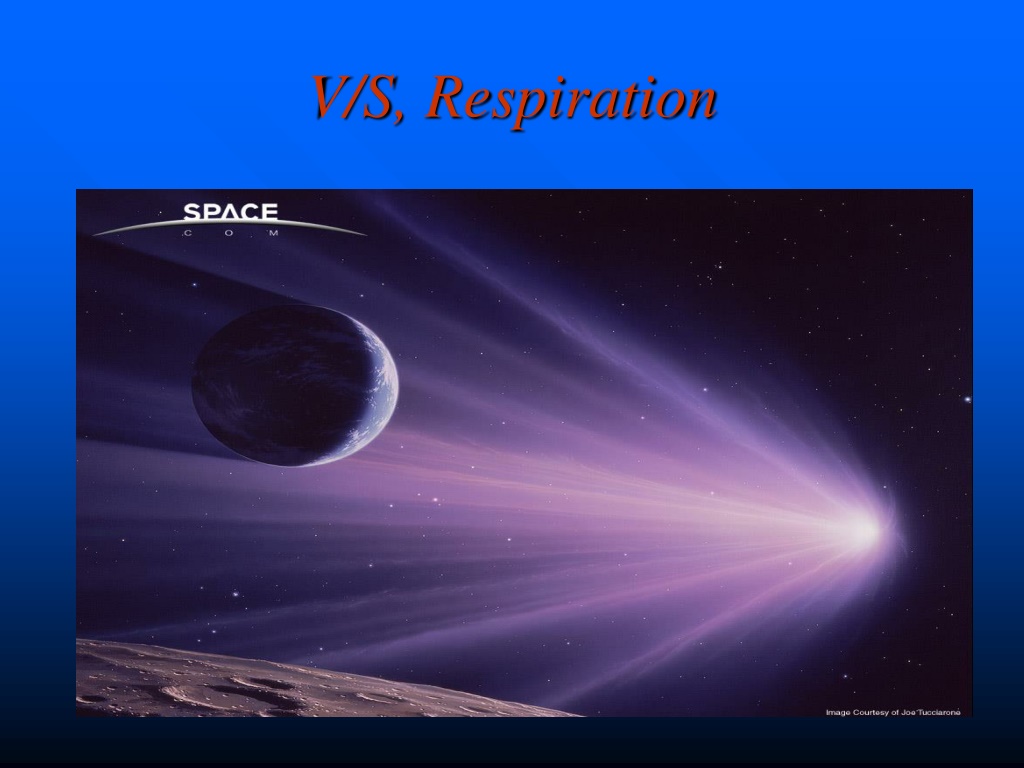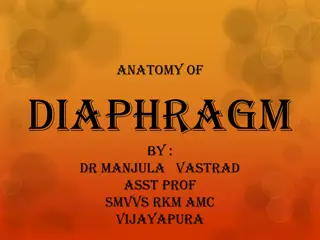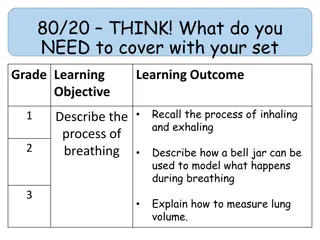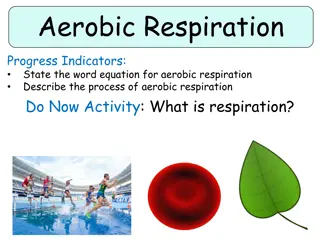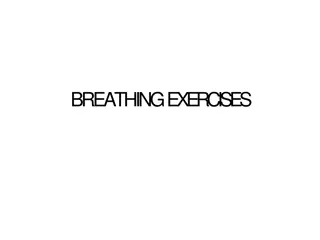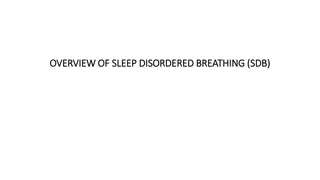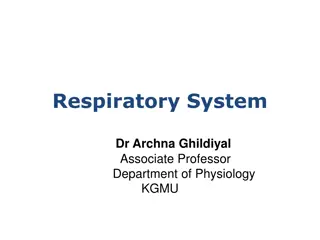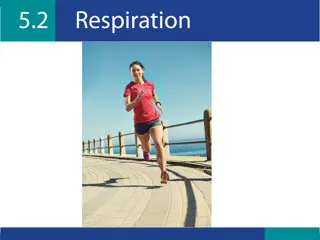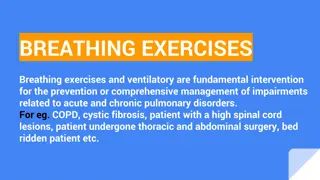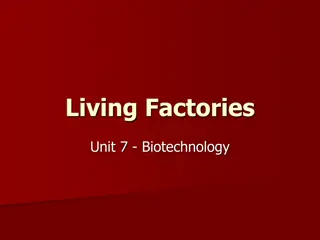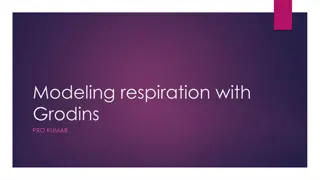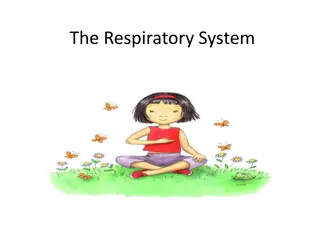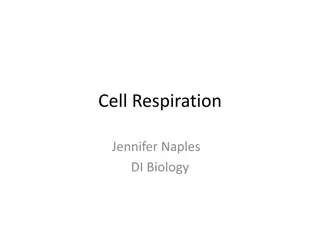Understanding Respiration and Breathing Process
Respiration is the vital process of inhaling and exhaling air to facilitate the exchange of oxygen and carbon dioxide in the body. It involves external and internal respiration, with mechanisms such as costal and diaphragmatic breathing. The regulation of breathing is controlled by the respiratory center in the medulla oblongata and the pons of the brain, responding to factors like exercise, stress, and oxygen levels in the environment.
Download Presentation

Please find below an Image/Link to download the presentation.
The content on the website is provided AS IS for your information and personal use only. It may not be sold, licensed, or shared on other websites without obtaining consent from the author. Download presentation by click this link. If you encounter any issues during the download, it is possible that the publisher has removed the file from their server.
E N D
Presentation Transcript
Function of the Lungs Provide transfer of Oxygen form air to blood Inhaled=21% Exhaled=16% Provide transfer of carbon dioxide out
What is the Respiration? It is the act of breathing through inhalation (inspiration) and exhalation. External respiration : interchange of O2 and CO2 b/w alveoli and pulmonary blood. Internal respiration : interchange of O2 and CO2 b/w circulating blood and cells of body tissues.
Costal (thoracic) breathing : Involves external inter-costal Muscles and accessory muscles (sterno-cleido-mastoid) The chest moved upward and outward
Diaphragmatic (abdominal) respiration : contraction and relaxation of diaphragm. Observed by abdominal movement
Mechanics and Regulation of Breathing 6
Figure 29-15 (continued) Respiratory inhalation. Anterior view. 8
Figure 29-16(continued) Respiratory exhalation. Anterior view. 10
Respiratory control Respiratory center in medulla oblongata and the pons of the brain Chemo-receptors located in medulla and carotid artery and aorta
Factors Affecting Respiration Factors Resp. Exercise Stress environmental temp. Lowered O2 concentrations at increased altitudes Factors Resp. Certain medication e.g. narcotics ICP 12
Respiratory rates 15-20 Breaths/m (teen ages- above 70 years) 15-25 B/m (5 - 10 years) 20-40 B/m (1 year) 30-80 B/m (new born)
Assessing respiration Complete cycles of respiration for one minute. Consider influences and factors affecting respiration and medications Don t tell the client when counting respiration
Description of respiratory rate Normal respiratory rate and depth= eupnoea Slow resp. = bradypnea Fast resp. = tachpnea (polypnea) Absence breathing = apnea
Respiratory volume Hypoventilation Hyperventilation
Respiratory Rhythm Cheyne-stokes breathing : very deep to very shallow and temporary apnea.
Ease and Efforts Dyspnea Orthopnea : ability to breath only in upright sitting or standing positions.
Breathing sounds Stridor (laryngeal obstruction) Stretor (snoring)(partial obstruction of URT) Wheeze (whistling) (narrowed or partial obstruction of airways) Bubbling (gurgling) (moist secretions in respiratory tract)
Chest movements Intercostal retraction (b/w ribs) Substernal retraction (beneath breast bone) Suprasternal retraction (above clavicles)
Secretions and coughing Hemoptysis Productive cough Non-productive cough
